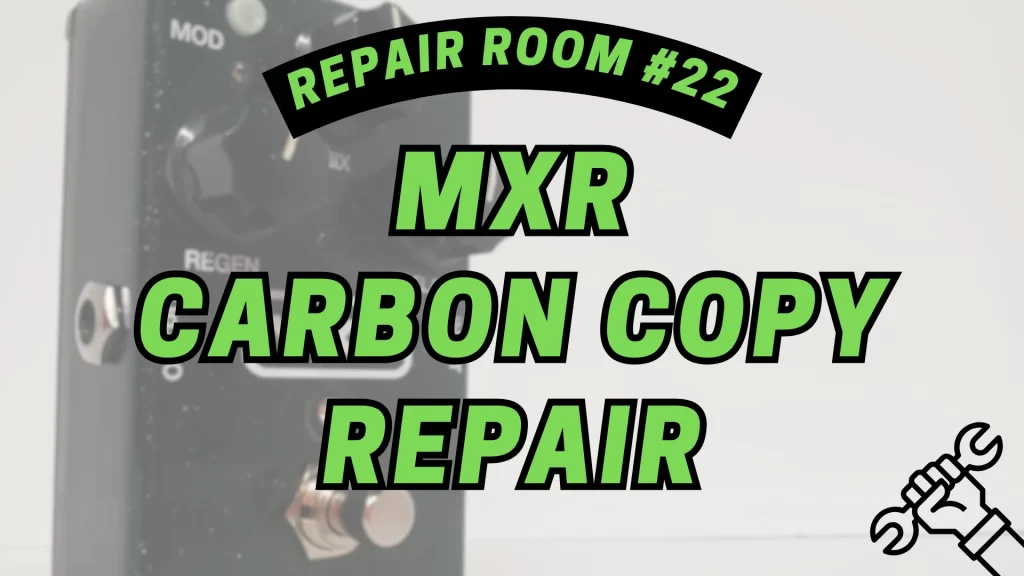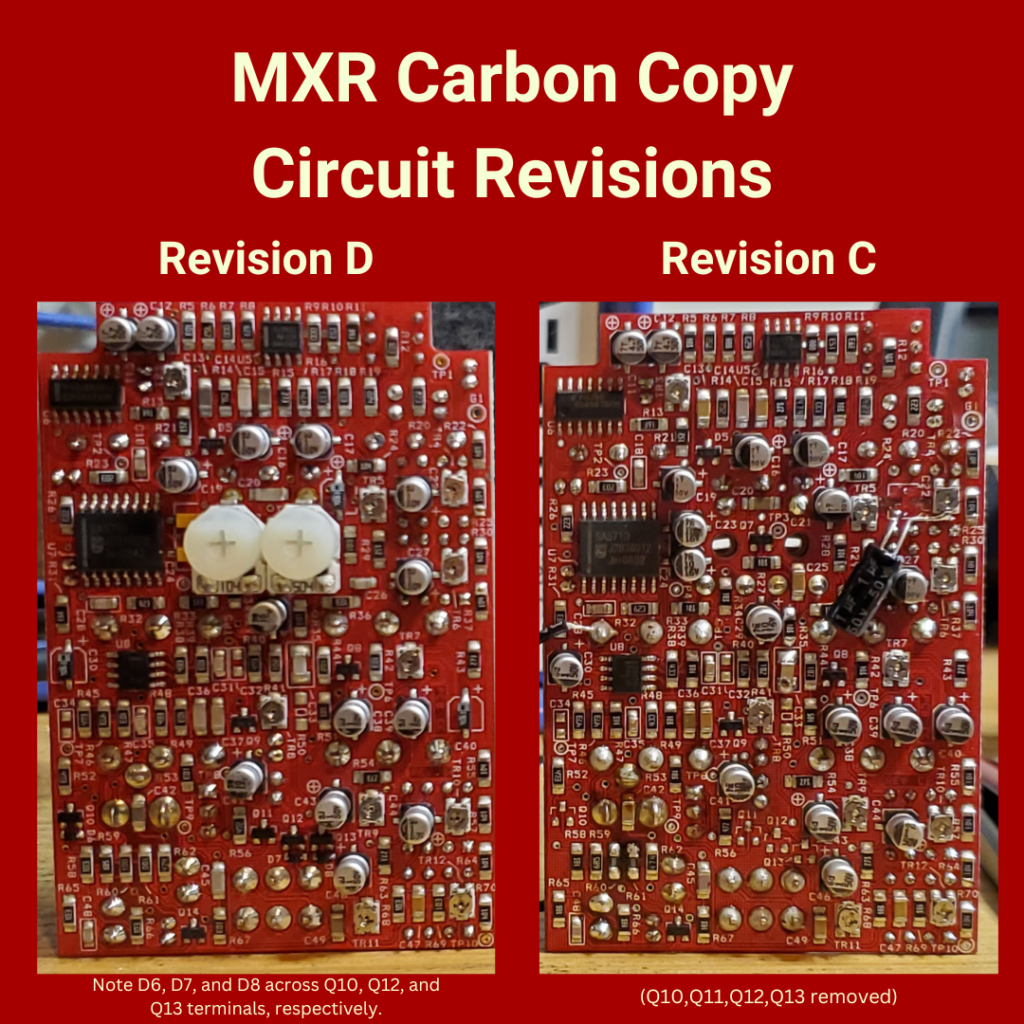
I had always heard about how there was a problem with certain versions of the MXR Carbon Copy, so I’ll admit there was a bit of excitement when I was approached with this repair. Basically, the pedal would work in bypass mode but did not turn on or pass signal when engaged. The indicator light didn’t work and the sound was dead.
As a member of the Reverb Partner Program and as an Amazon Associate, StompboxElectronics earns from, and is supported by, qualifying purchases.
Disclaimer: Stompbox Electronics and/or the author of this article is/are not responsible for any mishaps that occur as a result of applying this content.
The Troubleshooting
After opening the Carbon Copy I noticed that the circuit board is “Revision C.” Doing a quick search for the schematic yielded no useful results, but I was able to dig up a discussion thread related to the problem. Apparently MXR issued a technical report about an issue with the Revision C boards. I have yet to find this actual report, but forum lurkers suggest that the report was correcting a problem with a couple transistors burning out due to static discharge from plugging in/out the guitar cables.
Luckily, I have a Revision D Carbon Copy that I used to compare against the inoperable Rev C version on the bench. There are only two differences I noticed:
- The Rate and Depth trimpot positions were changed from one side of the circuit board to the opposite.
- Three diodes were added to protect Q10, Q12, and Q13.

The change in trimpot placement seems to have been for better user experience. Instead of sticking the screwdriver through the circuit board (Revision C) you can now see the position of the pot.
Assuming MXR corrected the problem, it seems that the decision to add the three diodes was related to static discharge. From this observation, I decided to order replacement FETs.
Replacing the Transistors
First, please be aware that removing the transistors is not for beginners. If you have no experience with soldering or electronics, then please seek the help of a professional. There is real damage that can be done to the copper traces and components surrounding the switch.
Here are the tools I used to remove the stock transistors (As an Amazon Associate, Stompbox Electronics earns and is supported by qualifying purchases):
I used the hot air station to heat up the remaining solder and the electrostatic tweezers to remove the components. Once the transistor is removed, quickly remove the hot air from the board so you don’t accidentally desolder other SMD components around the transistor. Do this for Q10, Q12 and Q13.
Installing the New Transistors
Before installing the new transistors, it helps to clean up the area with isopropyl alcohol. I replaced the transistors with three ON Semiconductor MMBFJ177LT1G. Unfortunately, after some testing, this did not fix the issue. The pedal was still dead, even after replacing the supposedly burnt out transistors.
However, I noticed something during the process. While the transistors were desoldered (and not yet replaced by the ones purchased from Mouser) I decided to power the board. The LED came on, which didn’t happen when the pedal was dead. I hooked it up, played through it, and my guitar signal was alive and well! The only downside was that the LED wouldn’t turn off.
The Solution
I couldn’t figure out the exact problem, but I wanted to get the Carbon Copy operable again. I knew that signal was passing without the transistors installed. My only challenge was getting the LED to turn off in bypass mode. So I did what every self-respecting engineer does: complicate things.
In the end, I decided to install my Relay True Bypass Module and replaced the stock footswitch with a Soft-Touch footswitch.
Personally, I’m not very satisfied with the result of this repair. It would’ve been better to figure out a true remedy for the Rev C circuit boards. Maybe I’ll come across another one with a little more time on my hands. For now, this will do.
Meet the Author:

Hi, I’m Dominic. By day, I’m an engineer. By night, I repair and modify guitar effects! Since 2017, I’ve been independently modifying and repairing guitar effects and audio equipment under Mimmotronics Effects in Western New York. After coming out with a series of guitar effects development boards, I decided the next step is to support that community through content on what I’ve learned through the years. Writing about electronics gives me great joy, particularly because I love seeing what others do with the knowledge they gain about guitar effects and audio circuits. Feel free to reach out using the contact form!
The Tools I Use
As a member of Amazon Associates, Stompbox Electronics earns and is supported by qualifying purchases.














